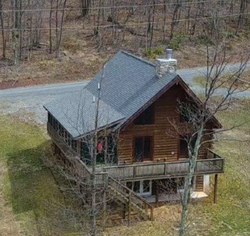In the past couple weeks, federal investigators have dropped the hammer on two of the biggest... two of the biggest criminal enterprises in the utility business. Are more coming? I'd say it's likely at this point. Be afraid, utility rainmakers, be very afraid!
Here's a summary from the document:
COMMONWEALTH EDISON COMPANY,
defendant herein, corruptly gave, offered, and agreed to give things of value, namely, jobs, vendor subcontracts, and monetary payments associated with those jobs and subcontracts, for the benefit of Public Official A and Public
Official A's associates, with intent to influence and reward Public Official A, as an agent of the State of Illinois, a State government that during each of the twelve-month calendar years from 2011 to 2019, received federal benefits in excess of $10,000, in connection with any business, transaction, and series of transactions of $5,000 or more of the State of Illinois, namely, legislation affecting ComEd and its business;
In violation of Title 18, United States Code, Section 666(a)(2).
Hiring of Public Official A's Associates as Vendor "Subcontractors" Who Performed Little or No Work for ComEd
ComEd employees and agents, including third-party consultants and lobbyists were subject to Exelon's Code of Conduct. Exelon's Code of Conduct, applicable beginning in 2015, required employees and agents to: (a) "(k]eep accurate and complete records so all payments are honestly detailed and company funds are not used for unlawful purposes"; (b) "[c]onduct due diligence on all potential agents, consultants or other business partners"; and (c) "[n]ever use a third party to make payments or offers that could be improper." Exelon's Code of Conduct also prohibited bribery and listed as an example of a prohibited bribe: "Providing something of value for the benefit of a public official in a position to make a decision that could benefit the company." Beginning no later than in or around 2011, Public Official A and Individual A
sought to obtain from ComEd jobs, vendor subcontracts, and monetary payments associated with those jobs and subcontracts for various associates of Public Official A, such as precinct captains who operated within Public Official A's legislative district. In or around 2011, Individual A and Lobbyist 1 developed a plan to direct money to two of Public Official A's associates ("Associate 1" and'' Associate 2") by having ComEd pay them indirectly as subcontractors to Consultant 1. Payments to Associate 1 and Associate 2, as well as later payments to other subcontracted associates of Public Official A. continued until in or around 2019, even though those associates did little to no work during that period.
Consultant 1 agreed in 2011 that Public Official A's associates would be identified as subcontractors under Consultant 1's contract and that ComEd's payments to Consultant 1 would be increased to cover payments to those subcontractors. Between in or around 2011 and 2019, Consultant 1 executed written contracts and submitted invoices to ComEd that made it falsely appear that the payments made to Company 1 were all in return for Consultant 1's advice on "legislative issues" and "legislative risk management activities," and other similar matters, when in fact a portion of the compensation paid to Company 1 was intended for ultimate payment to Public Official A's associates, who in fact did little to no work for ComEd. Consultant 1 and Company 1 did little, if anything, to direct or supervise the activities of Public Official A's associates, even though they were subcontracted under and received payments through Company 1. Moreover, because they were paid indirectly through Company 1, the payments to Public Official A's associates over the course of approximately eight years were not reflected in the vendor payment system used by ComEd, and as a result, despite that Public Official A's associates were subcontracted under and receiving payments through Company 1, no such payments were identifiable in ComEd's vendor payment system.
I wonder if ComEd and PATH were comparing notes on hiding the gravy $$$?
And yesterday, the federal boogeyman showed up in Ohio to clean house in an alleged $60M bribery scheme involving a FirstEnergy subsidiary and Ohio's Speaker of the House Larry Householder. You can read those court documents here.
In this instance, the schemers were arrested and charged with conspiracy to participate in an enterprise's affairs through a pattern of racketeering activity. RICO. UT-OHHH FirstEnergy! Quick, NEO's to the basement bunker to use their bodies as human shields to to protect Chatty Chuck!
Bribery, extortion and efforts to defraud the government, FirstEnergy? Who woulda thunk it...
Oh, wait... I've read a whole bunch of their internal documents over the years. I guess I woulda thunk it. Schadenfreude!
I'm going to bet that all investor-owned utilities buy elected officials and regulators, either with cash, contracts, fake "jobs", maybe even hookers and blow, who knows? Looks like the utility will supply whatever it takes to make sure your elected official or regulator is working for the them, and not you. But our government has been watching... and now heads are rolling. It's about damned time.
UT-OH utility rainmakers.... who's going to be next?




 RSS Feed
RSS Feed